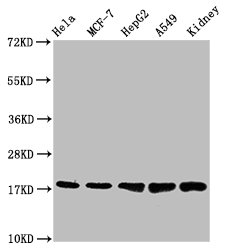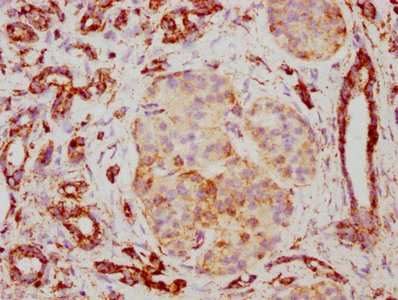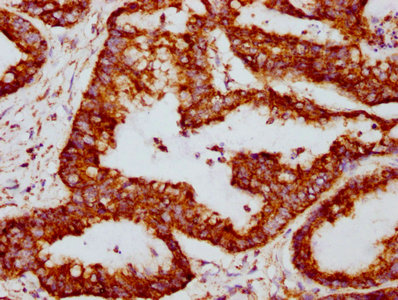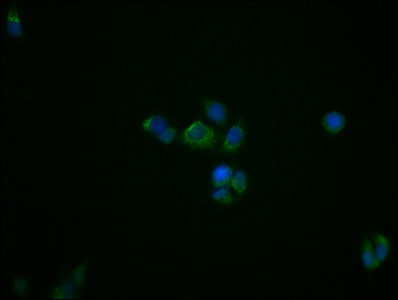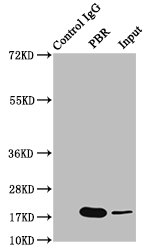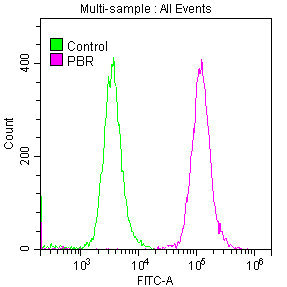The generation of the TSPO recombinant monoclonal antibody involves the utilization of DNA recombinant technology and in vitro genetic manipulation. Initially, animals are immunized with a synthesized peptide derived from human TSPO, leading to the isolation of B cells. Positive B cells are then identified and selected through screening and individual clone identification. The light and heavy chains of the TSPO antibody are subsequently amplified via PCR and inserted into a plasmid vector. This recombinant vector is then transfected into a host cell line to facilitate antibody expression. The TSPO recombinant monoclonal antibody is purified from the cell culture supernatant using affinity chromatography. This antibody specifically recognizes both human and mouse TSPO proteins and is suitable for six applications, including ELISA, WB, IHC, IF, FC, and IP.
The TSPO is located in the outer mitochondrial membrane and is involved in cholesterol transport and steroid biosynthesis. It has been shown to play a role in cell survival, proliferation, and apoptosis. TSPO has been implicated in various physiological processes, including the regulation of mitochondrial function, cellular energy metabolism, and calcium signaling. It also participates in various pathophysiological conditions, including neurodegenerative diseases, psychiatric disorders, and cancer.

